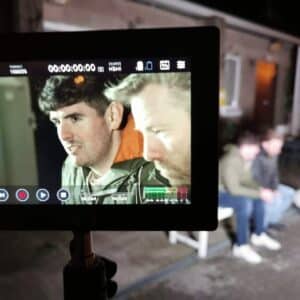Effective Learning: The Feynman Technique: Effective learning is something all students should strive toward. It’s all well and good taking page after page of lecture notes, highlighting the main points, spending hours reading and re-reading. But are you learning effectively?
Passive learning is a method of learning or instruction where students receive information and internalize it. Sitting in a lecture hall listening to a teacher or sitting in a library reading a book are examples of passive learning. Passive learning often revolves around the false belief that simply by being exposed to knowledge, you learn.
What this fails to take into account is what you do with that information – how can you transform it into knowledge and understanding. You may take it in, you may absorb it but have you made sense of it?
One way of testing how well you understand it is to communicate it effectively. Here’s where we move from passive to active learning, which often is at its best when students have opportunities to express ideas. Yes you can cram information into your head – but do you understand it.
One way to discover this and improve your effective learning, moving from passive learning to active learning, is adopting what is known as the Feynman Technique. This technique puts the focus on being able to successfully communicate ideas to others as an indicator of having full grasp of the information yourself. In a nutshell, If you know it you can explain it to anyone – even a child!
The Feynman Technique is named after the Nobel Prize-winning American theoretical physicist Richard P. Feynman. Not only was Feynman a great scientist he was also a great teacher, earning the nickname “The Great Explainer.”
Although the idea of teaching someone else as an effective way to learn wasn’t itself a new concept – we can go back to the Roman philosopher Seneca who wrote “While we teach, we learn,” for that – what was unique in Feynman’s methods was his insistence on not hiding behind complex ideas and his insistence on stripping things down to their most basic knowable elements.
What Feynman did as a teacher was simplify and explain complex concepts, communicating them to his students in simple language that they were able to understand.
Feynman was able to do this by consistently breaking down concepts, theories, equations, etc until whatever it was he was teaching could be intuitively easy to understand, firstly in his own mind. From this point, he was able to successfully teach it to others. Feynman was, in effect, rewiring his understanding of something by pulling it apart and reconstructing it to a point where he knew it completely. From this point, it could be taught.
This method of teaching became the basis of the Feynman technique of learning by teaching others because breaking down a concept to its simpler form and then explaining it to others in effect works to improve your own understanding of that concept.
As Feynman himself said, “The ultimate way to ensure that you actually understand all the little nitty-gritty details of a concept in head is to explain it to someone else, or at least to pretend you’re doing so.”
The Feynman Technique revolves around knowing something by being able to teach it. Pretend you are teaching the concept to someone who has no prior knowledge about it. Use simple language and plain terms that are easily understood, avoiding unnecessary jargon, obtuse terminology and complex ideas.
Is it accurate despite using simple language? Can you successfully explain it? What did you leave out? Identify your knowledge gaps. Identify your weak points. Return to the original learning material and clarify these points. Get to the hypothesis in as few words as possible.
It’s all about clear thinking and clear presentation. Understand it and convey it using concise thoughts and simple language.
This act of explaining a topic as if you were teaching it to somebody who didn’t have the same knowledge that you have is a great test of your own knowledge.
Thinking about going to college? Whichcollege.ie is a national database of universities, colleges, institutes and providers of third level, CAO and PLC courses in Ireland.












Great article, well written, thank you for posting it